It has now been almost 10 years since white-nose syndrome, a devastating fungal disease of hibernating bats, was first found in Canada.
There are 19 species of bats in Canada, but not all of them are affected by WNS. Some bat species migrate south for the winter instead of hibernating, while others live in areas of Canada where WNS has not yet been found, such as Alberta, Saskatchewan and British Columbia. Sadly, WNS continues to spread west and is now found in Manitoba, as well as in all provinces east of Manitoba.
The Three Bat Species Affected
Three bat species in Canada have been severely affected by WNS:
- Little Brown Bat
- Northern Long-eared Bat
- Tri-colored Bat
Researchers approximate that roughly six million bats in North America have died as a result of this disease. In areas of the Atlantic provinces, bat populations have declined by 99 per cent when affected by WNS, with similar trends in affected sites in Ontario and Quebec.
Other bat species develop the disease but for unknown reasons have been less severely impacted, including the Big Brown Bat and Small-footed Bat. But there is hope for impacted species: despite large-scale mortality, Little Brown Bats are persisting in Canada and even reproducing!
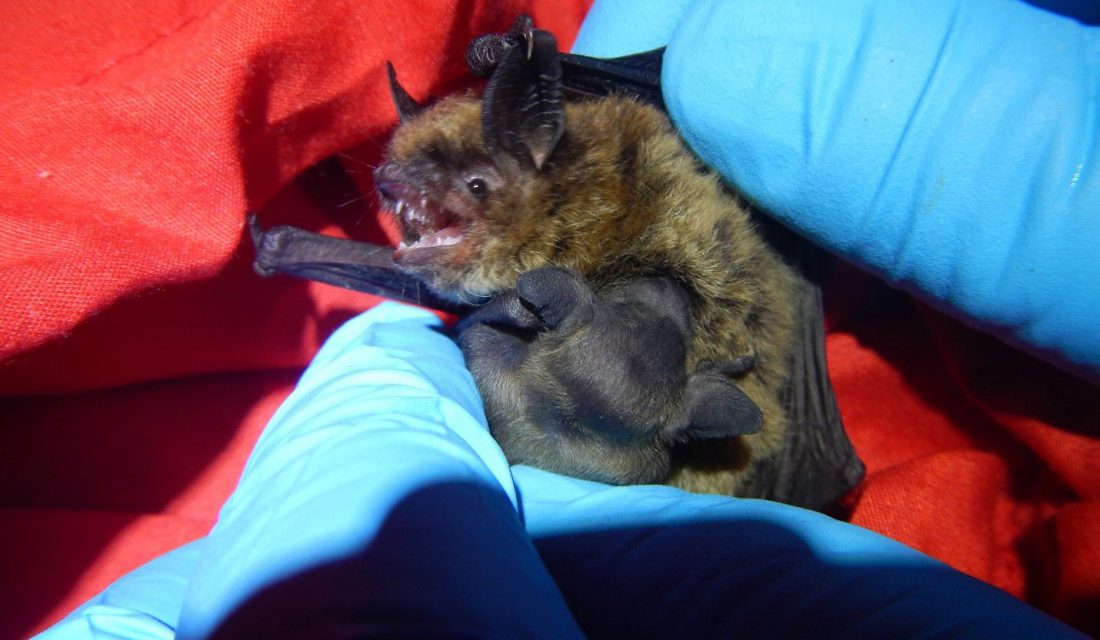
We caught this Little Brown Bat and her pup (shown nursing, above) in early July at a maternity colony in New Brunswick. This pup cannot yet fly, but its mother can fly while carrying a pup that is almost as heavy as she is!
At birth, a Little Brown Bat pup weighs about 30 per cent of its mother’s body weight. This maternity colony was found in a bat house, but maternity colonies can also be found in attics; the female Big Brown Bat pictured below was found in an attic in Ontario.
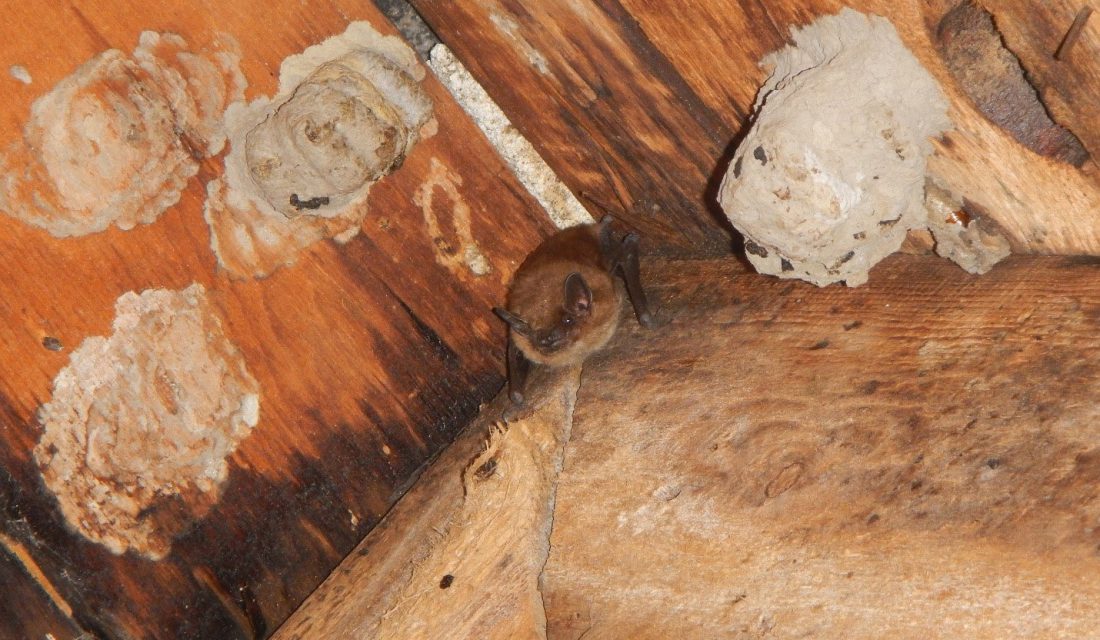
Finally, Some Good News!
I surveyed bat colonies during the maternity season (late May, June and early July) in Ontario, Prince Edward Island and New Brunswick. I did this with help from Jordi Segers (Canadian Wildlife Health Cooperative National office) and Tessa McBurney (Canadian Wildlife Health Cooperative Atlantic office), among others. All the bats we caught appeared healthy. Most of the females were reproducing, even though WNS has been present for years in these provinces. The Canadian Wildlife Federation’s tagging and tracking study in the Ottawa area found similar results.
Researching Bats
To collect the data we need to research bats, we first have to catch them. We use two types of traps to catch bats for the purpose of taking measurements and samples for research.
Mist Nets
The mist nets are the same ones used to catch birds. Pictured below are Big Brown Bats caught in a mist net in New Brunswick in June 2019.
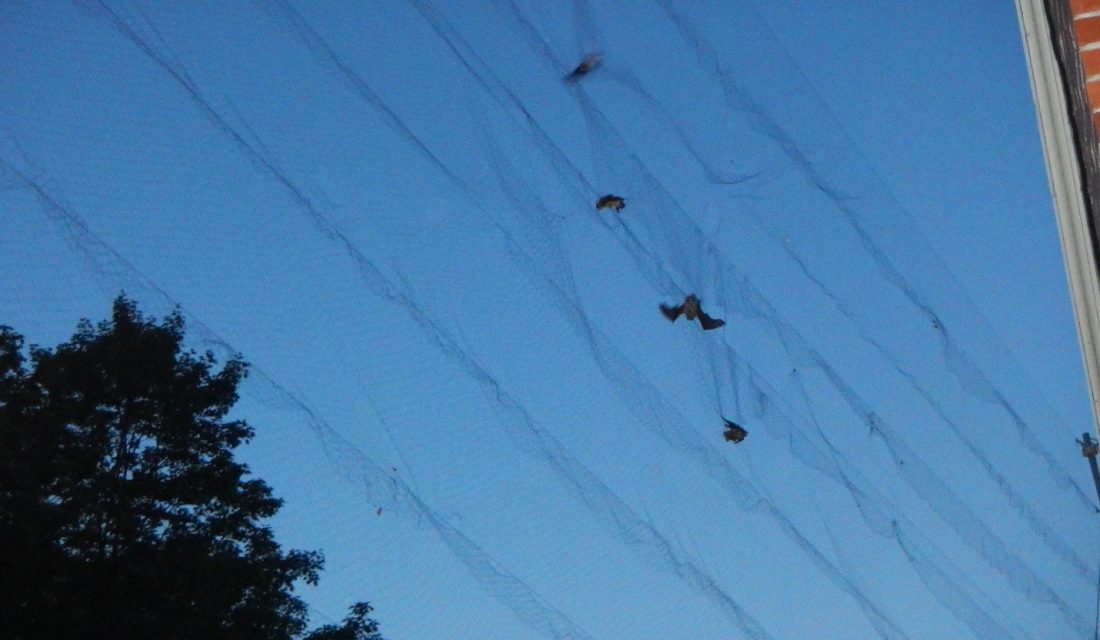
Harp Traps
Below is an example of a harp trap that has been set up in front of an abandoned mine in New Brunswick during swarming season (August and September). Bats fly into the fishing line – which is strung in the frame like a harp – and then fall into the bag below. Swarming season is mating season for bats; they gather at potential hibernacula (overwintering sites), such as caves and mines.

During swarming surveys in Ontario, we were lucky enough to catch this beautiful male Red Bat in one of our harp traps! Red Bats are sexually dimorphic. This means the males and females don’t look the same – the females are not as brightly colored as the males. Red Bats are migratory and are not affected by WNS, however many migratory bats are killed by wind turbines during their migration south.
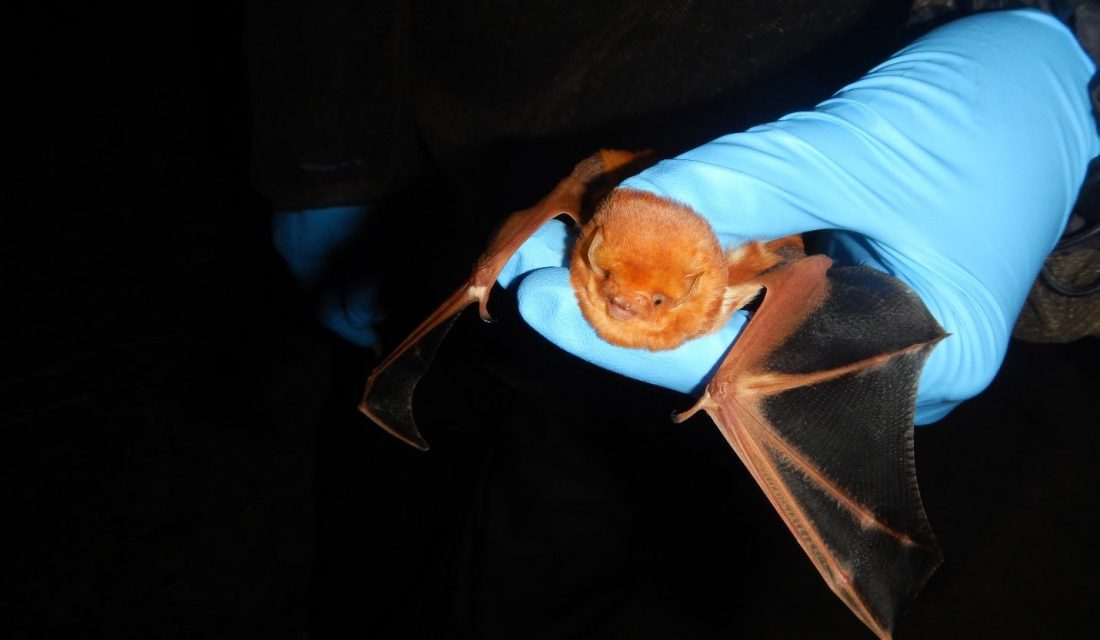
Sadly, the number of bats we caught during swarming season in New Brunswick was much less compared to our work pre-WNS. Although bats are reproducing, it will likely take a long time for the population to recover from the large-scale mortality caused by WNS.
What Can You Do?
Provide a roosting site for a female bat and her pup! CWF is here to guide you through every step. Begin by downloading these free DIY instructions. Building a bat house is always beneficial, but especially during the crucial months of April through June will provide a roosting site for a female bat to have her pup. Bats only have one pup per year, so providing them safe haven is vital to their survival. Bats also make great neighbours; they help control insects through spring and summer.



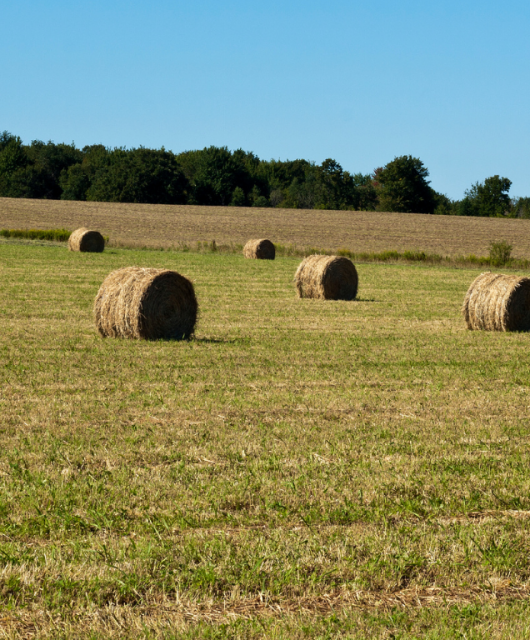
4 comments
I am wondering about the mortality and injury rate when you use these capture devices?
Hi Larry,
Good question! The methods used to capture and tag these bats followed strict protocols and had to be pre-approved by an independent Animal Care Committee. The necessary permits were also obtained from the Ontario Ministry of Environment Conservation and Parks after reviewing our methods. The handling of the bats themselves was done by a specialist with over 10 years of experience. The tags that are placed on the bats are the size of a watch battery and weigh less than 5% of the bat’s body weight (based on the protocol we had to follow). The glue used to hold the tags on is human grade surgical glue and falls of the bat after two – three weeks.
Studies have been carried out to develop and assess these methods to assure there is no harm to bats in the process. A 2014 study published in the Journal of Mammalogy has shown that the survival of big brown bats after having a transmitter of 5% of their body weight was the same as bats that did not.
The capturing method has been assessed as well. A 2006 study published in Australian Mammalogy had documented approximately 0.04% mortality using the trapping method we had used. Those deaths were due to dehydration, overcrowding and predation, but the bats we captured did not stay in the traps long enough to experience any of these.
Even following strict protocols, bats’ bones are quite fragile and there is always a risk that an individual is inadvertently injured during handling. Thankfully we found that the bats that we handled during our work were in good health when we released them and were even given a tasty snack of mealworms for their trouble!
Biologists do incredible work! Bravo!
I used to volunteer for bird banding, much similar to catching bat’s using the mist nets. We too had to be very careful when extracting the bird from the net so they are safe. And not yo handle them for too long while recording data.
It was quite an eye opening experience, and challenging. But I enjoyed seeing the birds. I think I would enjoy the bat’s just as much 🙂
We never set out mist bets when it rained though. If it was raining too much the shift would be cancelled because if birds were caught in the mist net upside down. The water gets in under their wings, and I was told its not safe for the birds.
We had a great team of experienced birders!